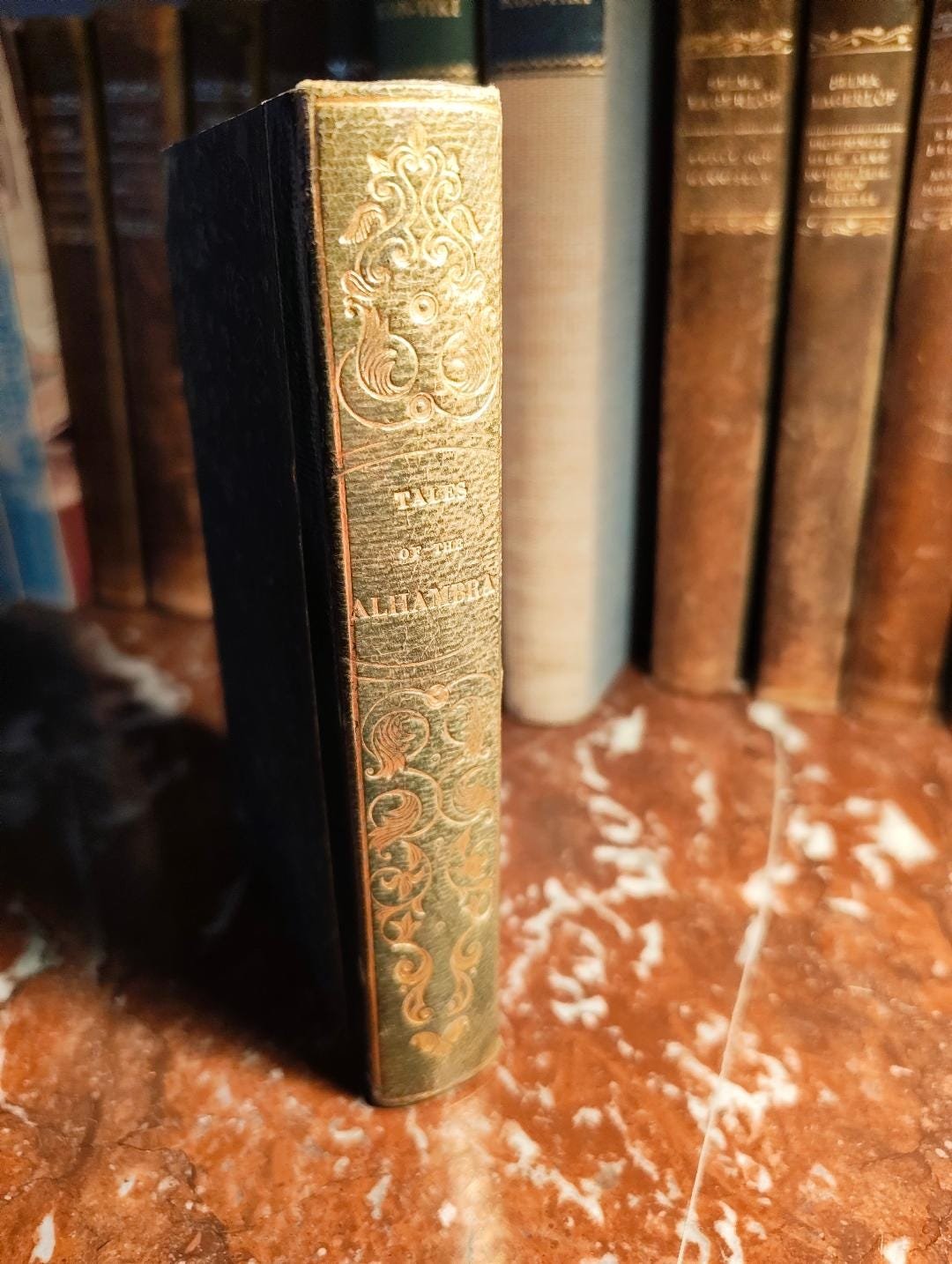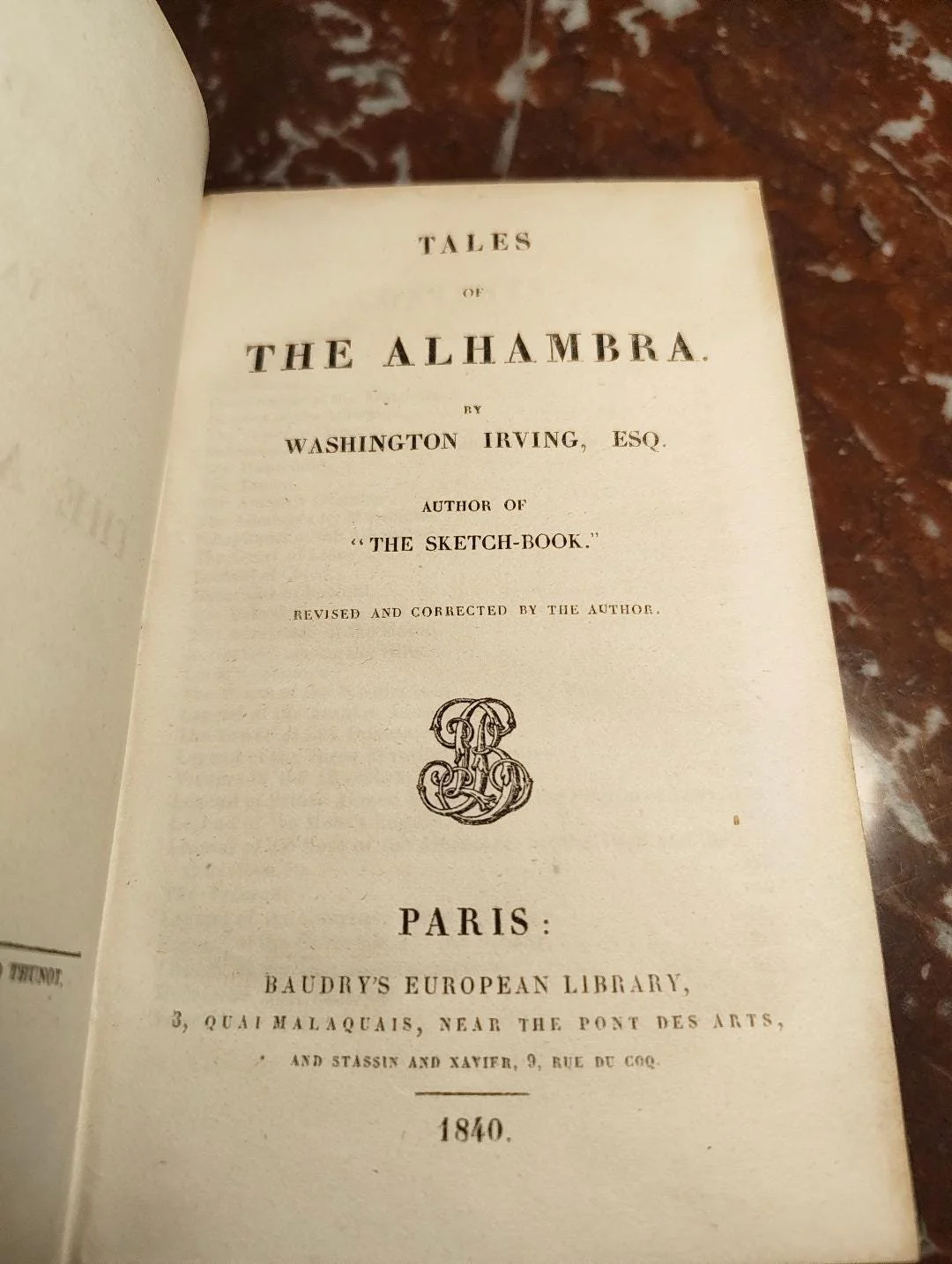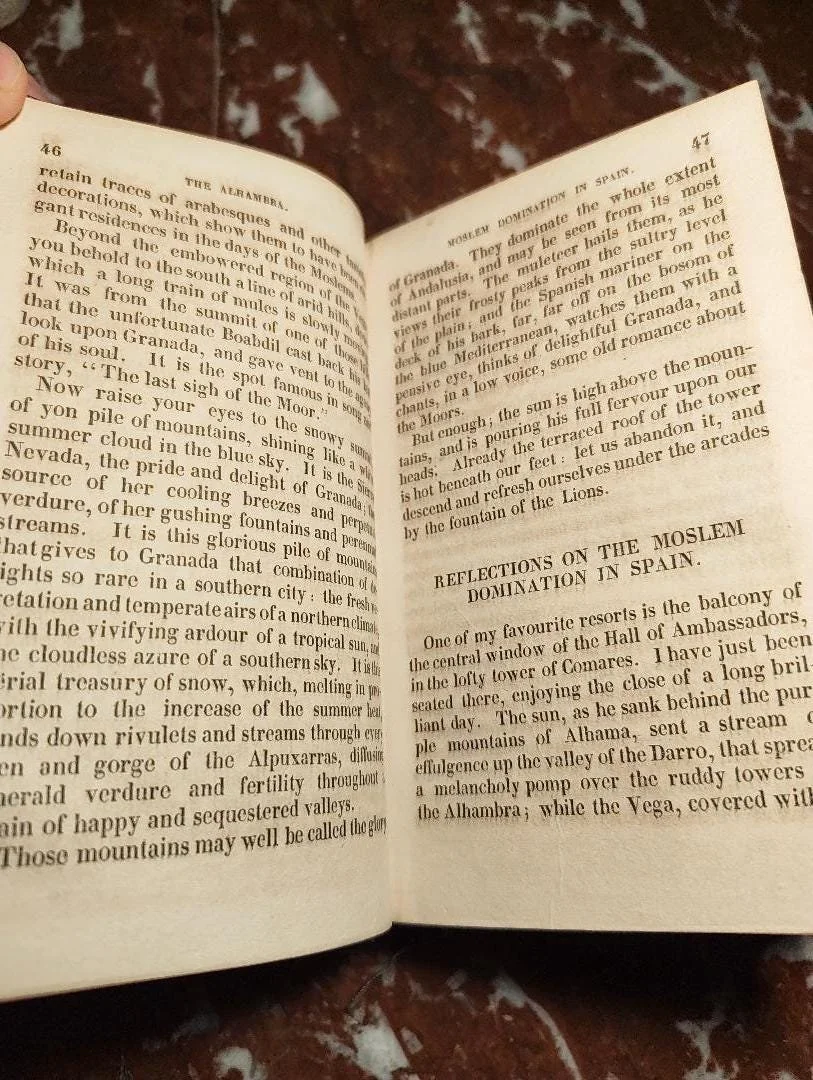 Image 1 of 8
Image 1 of 8

 Image 2 of 8
Image 2 of 8

 Image 3 of 8
Image 3 of 8

 Image 4 of 8
Image 4 of 8

 Image 5 of 8
Image 5 of 8

 Image 6 of 8
Image 6 of 8

 Image 7 of 8
Image 7 of 8

 Image 8 of 8
Image 8 of 8









Washington Irving. Tales of the Alhambra. Nineteenth Century Leather Bound Edition
A Romantic era vision of Moorish Spain in its original nineteenth century dress
This nineteenth century edition of Tales of the Alhambra preserves one of the defining works of Romantic travel literature. First published in 1832, Washington Irving’s collection arose from his extended stay within the walls of the Alhambra Palace in Granada, where he lived, explored, and wrote among the remnants of Andalusia’s Moorish past. The result became an intricate blend of personal reflection, imaginative storytelling, historical sketch, and folkloric tradition.
Irving’s work introduced generations of readers to an idealised vision of Spain, coloured by the ruins and legends of the Nasrid dynasty and shaped by the Romantic fascination with the exotic and the picturesque. His narrative wanders through abandoned halls, hidden courtyards, and mountain villages, capturing a world suspended between myth and history. The book occupies a significant place in the evolution of travel writing, balancing close observation with artistic embellishment and conveying the atmosphere of early nineteenth century Granada with enduring charm.
This copy is preserved in its contemporary half leather binding with gilt decoration along the spine and marbled paper boards. The leather shows age related wear along the hinges and edges, and the gilt has softened, yet the structure of the book remains sound. The interior displays the gentle toning and occasional foxing typical of the period and is otherwise clean, complete, and pleasing to read.
As an artefact, the volume brings together nineteenth century craft, Anglo American literary history, and the Romantic rediscovery of Spain. It holds particular appeal for collectors of travel literature, admirers of Irving’s work, and those drawn to the cultural encounter between Europe and the heritage of Al Andalus.
A thoughtful and atmospheric addition to any library, especially suited to readers who appreciate the literary imagination of the Romantic era.
A Romantic era vision of Moorish Spain in its original nineteenth century dress
This nineteenth century edition of Tales of the Alhambra preserves one of the defining works of Romantic travel literature. First published in 1832, Washington Irving’s collection arose from his extended stay within the walls of the Alhambra Palace in Granada, where he lived, explored, and wrote among the remnants of Andalusia’s Moorish past. The result became an intricate blend of personal reflection, imaginative storytelling, historical sketch, and folkloric tradition.
Irving’s work introduced generations of readers to an idealised vision of Spain, coloured by the ruins and legends of the Nasrid dynasty and shaped by the Romantic fascination with the exotic and the picturesque. His narrative wanders through abandoned halls, hidden courtyards, and mountain villages, capturing a world suspended between myth and history. The book occupies a significant place in the evolution of travel writing, balancing close observation with artistic embellishment and conveying the atmosphere of early nineteenth century Granada with enduring charm.
This copy is preserved in its contemporary half leather binding with gilt decoration along the spine and marbled paper boards. The leather shows age related wear along the hinges and edges, and the gilt has softened, yet the structure of the book remains sound. The interior displays the gentle toning and occasional foxing typical of the period and is otherwise clean, complete, and pleasing to read.
As an artefact, the volume brings together nineteenth century craft, Anglo American literary history, and the Romantic rediscovery of Spain. It holds particular appeal for collectors of travel literature, admirers of Irving’s work, and those drawn to the cultural encounter between Europe and the heritage of Al Andalus.
A thoughtful and atmospheric addition to any library, especially suited to readers who appreciate the literary imagination of the Romantic era.

